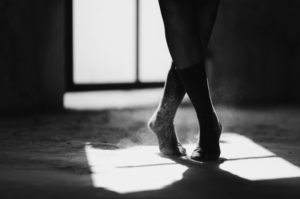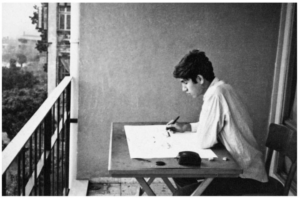
We are still uncertain who started it, but by 11 a.m., the fire had spread to Rhodes Memorial Restaurant. The place blew up like it had been hit by an incendiary. From my street, all I saw was billowing smoke that wrapped Devil’s Peak mountain in a thick cloth of raging destruction. I am used to the usual “table cloth” that sometimes covers the Devil’s Peak and Table Mountain summits in foggy, creamy whiteness like a god has draped his finest over them. It is an enchanting sight. A San legend says the “table cloth” is the Mantis God’s white kaross smothering a blaze on the mountain top. It is both myth and prophecy. These mountains have always wanted to burn.
The fire spread from Rhodes Memorial into the forest of invasive pine trees below it, devouring the floor of acquiescent pine needles and the ready, burnable native fynbos. In a little while, that insatiable flame was licking at the peripheries of the University of Cape Town. In my mind, something as iconic as the University of Cape Town could never burn. It was meant to be immortal and untouchable. Everyone would do what they could to stop this raging fire. It would rain. The fire would simply die out. Something would happen. Meanwhile, fire department helicopters droned above us carrying what looked to me like miniature buckets of water. “Waterbombing,” we would later learn.
On social media, we saw pictures of the unrelenting infernal blaze rising in hellish ferocity just behind the university. But surely we would have it under control. Surely. The city rose in frenzied desperation; residents speeding with drinking water, Lip Ice, and energy drinks to firefighting depots. We heard that 150 firefighters were out there fighting the inferno. And then we heard that students staying on the University of Cape Town campus had been evacuated. I imagined it was all about the smoke. We would have this fire under control. A little while later, we heard the Jagger Library had caught fire.
I remember the first video I saw of Jagger on fire. It was a harrowing clip of destruction so total, so unhinged yet still cinematic and hypnotic. I watched this building I once thought indestructible give and give to the fire without a fight. Firefighters took aim at its top windows and the fire drank but would not let up. Helicopters with their buckets bombed the fire with water, hoping to douse it from above, bathe it and silence it. But it raged on. The Mantis God’s fire had escaped the kaross.
By the end of that day, six firefighters had sustained injuries. Nine other local residents had been taken to the hospital, panting and heaving from the labor of breathing in a burning city. 600 hectares of land in the Table Mountain National Park were destroyed and 11 structures were either damaged or destroyed in the fire. Jagger Library was one of them.
Later that day, a man was caught near a newly ignited fire on the slopes of Devil’s Peak. He was one of three shadowy figures seen by residents lingering around newly lit fires on the mountain. The news reported that he was a homeless man staying in a plastic home near the slopes of Devil’s Peak. He would later tell the police that he was from Tanzania and had come to South Africa to read for a qualification in Information Technology at the College of Cape Town. No one ever linked him to the fire that started that morning, but South African National Parks said an initial investigation had concluded the fire’s origin was a vacated flame lit by homeless people.
***
On Thursdays, I volunteer with a small organization in Cape Town’s Observatory suburb, south of the city center. The organization feeds a small homeless population in the area. For breakfast, we normally make porridge and sandwiches for fifty. The organization offers dinners too, and a few local restaurants have signed up to assist on certain days. When I started with the group at the end of 2020, we served about fifty people, but the numbers have been creeping up every week. Soon we will hit sixty. I now see new faces almost every Thursday.
It is estimated that there are now over 14,000 people living on Cape Town’s streets. The City spends over 51 million USD responding to homelessness every year. This translates to 3,400 USD for every homeless person per annum. How this money is actually spent depends on who you ask. All we can be sure of is it has not been spent on building shelters. The city has been accused of wishing homelessness away. City bylaws criminalize begging and building plastic structures in public places. A story is told of a homeless woman arrested for dumping and littering. Her plastic home was the dump. Her home was the litter. Others have accused the city of allowing homeless people to get away with crimes other people would be arrested for. Devil’s Peak and Vredehoek residents have accused homeless people of starting fires on the city’s watch. Those fires that keep them warm can burn mountains and libraries.
A month before the fire that razed much of Devil’s Peak and claimed Jagger, the Cape Town Mayor released an open letter telling us, “It is no crime to be poor or down on your luck, but every single resident has to comply with by-laws and the law in general.”
I am still not sure what he meant.
***
When it comes to fire, it depends on who is burning. In January alone, over 500 people were displaced due to shack fires in Cape Town, but no lists were compiled. Hotels did not open up for them, and the fires certainly did not dominate headlines or get an international outpouring. It all depends on who is burning. On the day of the fire, a number of hotels donated rooms while others offered rooms at discounted rates. Lists of individual well-wishers offering rooms in their homes also circulated on social media. In December 2020, more than 1,100 homes were razed in the informal settlement of Masiphumelele near Fish Hoek in Cape Town. Residents were accommodated in a nearby sports field. Many others slept on the streets for weeks. When shacks burn, the devastation is distant, hidden, and unseen.
***
I mourned the books and ideas that vaporized to thick, black, unintelligible smoke in the Jagger Reading Room. I mourned them more than I mourned livelihoods and homes lost in the Cape Town shack fires. Here I stand, educated and unsighted. Here I become soulless.
***
In all fairness, we lost a lot in that fire. The university vice-chancellor says we lost just about all archival and published print collections kept in the reading room. The entire African Studies Film Collection of approximately 3,500 items was gutted. We lost the majority of the African Studies Published Print Collection of about 70,000 items. Part of the African Studies Collection, the Pamphlet Collections, the African Studies Poster Collection, Rare and Antiquarian Books, and primary source materials are thought to have been damaged due to flooding after the fire was doused. After the fire, I joined hundreds of others who volunteered for the salvage operation at Jagger Library. We held these soggy books dripping of water — their salvation and destruction. Not for water, all might have been gutted. Because of water, all is getting moldy. Soaked books were carried in crates to a white tent we called “Triage.” There the school will salvage the salvageable. Who knows what will be saved? What voices from the past we will rescue from the ash?
But what of today? Hundreds of homeless people still live in the mountains. They light little fires to keep warm. To survive Cape Town’s frigid nights. The little fires flicker and die out. Flicker and die out. For now, the Mantis God’s kaross holds and hides the fire, but one day, those flames will escape again. To bury inequality is to bury the seeds of fire. They will sprout in a flaming red that consumes us all. This fire will burn again.










Chioniso Tsikisayi September 08, 2021 13:28
Wow